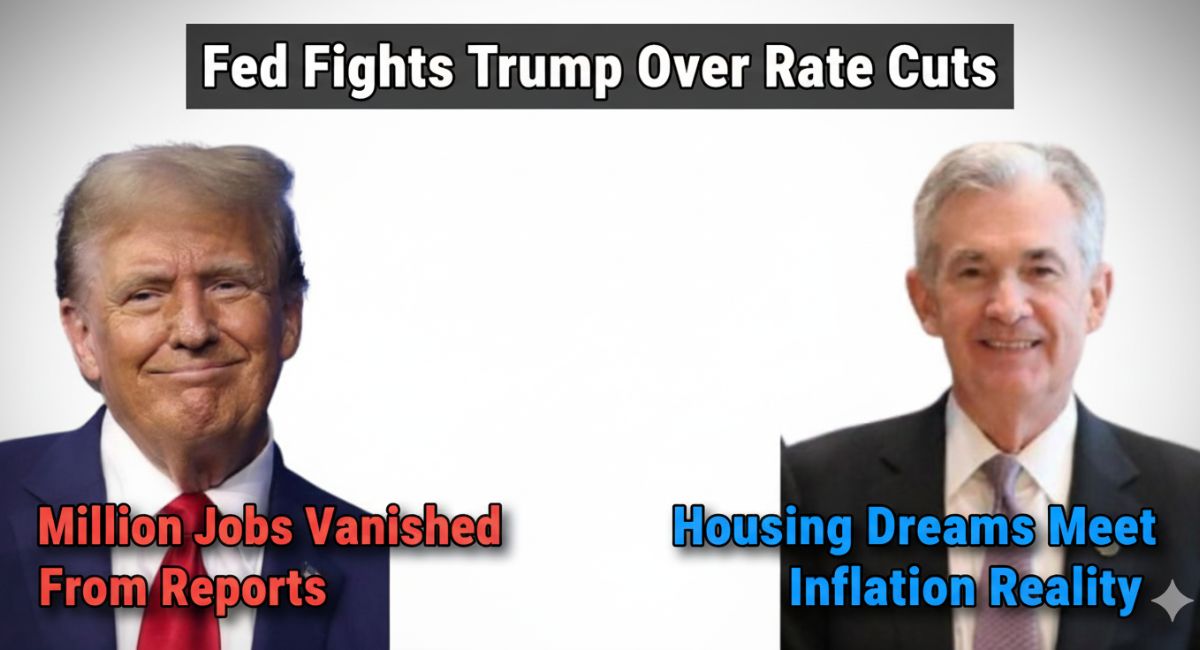The Federal Reserve’s latest meeting just kicked off with some serious drama unfolding behind the scenes. President Trump cranked up the pressure on Fed Chair Jerome Powell with a direct social media message that’s impossible to ignore: “Too late, must cut interest rates now and bigger than he had in mind. Housing will soar!”
This isn’t your typical central bank meeting. The economic data coming in has been sending mixed signals that would confuse anyone trying to make sense of where we’re headed.
Economic Red Flags Creating Fed Headaches
The labor market just delivered a massive reality check. Fed policymakers are expected to cut the benchmark interest rate by 25 basis points amid labor market weakness and inflation rising further above the central bank’s 2% target. But here’s what really caught my attention – recent job number revisions showed that over the past 12 months, about a million fewer jobs were added to the economy than initially reported. That’s not just a small adjustment – it completely changes how you view the strength of our labor market.
Meanwhile, inflation has started climbing again. The Fed has been fighting this battle since the pandemic, making real progress as supply chain issues started resolving. But now tariffs are creating new inflationary pressures, and we’re seeing evidence that these trade policies are directly fueling price increases.
This creates an impossible situation for the Fed. Fighting unemployment requires rate cuts to stimulate the economy. Fighting inflation requires higher rates to cool things down. You can’t do both simultaneously.
Housing Market Reality Check
Trump’s claim that “housing will soar” after rate cuts deserves a closer look. The relationship between Fed rates and mortgage rates isn’t as straightforward as many people think.
Here’s what actually drives your mortgage payments: the 10-year Treasury yield, not the Fed’s benchmark rate. Bond investors control those longer-term rates, and they don’t automatically follow the Fed’s lead. Fed officials are considering a potential rate reduction as economic indicators suggest policy adjustments may be needed.
Even if we get a 25 basis point cut, mortgage rates might not budge if bond investors push up the 10-year yield. The Fed controls very short-term rates, but Wall Street’s reaction determines what happens to the long-term rates that actually affect your monthly payments.
Fed Committee Faces Internal Divisions
The economic outlook is uncertain, and the Committee is attentive to the risks to both sides of its dual mandate, according to the Federal Reserve’s recent statement. This mixed economic data is creating what amounts to a confusing soup for Fed officials.
The challenge is that depending on which data you focus on, you can get completely different pictures of the economy. Low-income consumers are struggling while higher-income households remain resilient. This divergent economy makes unified decision-making nearly impossible.
Adding another layer of complexity: Stephen Miran, chairman of the Council of Economic Advisers, was confirmed by the Senate just one day before the FOMC meeting. This timing means Trump’s economic advisor will attend his first Fed meeting as a voting member during this critical decision.
What This Means for Your Money
The Fed’s dilemma extends beyond just this meeting. Up until now, the Fed has maintained its current interest rate position despite ongoing pressure from President Trump to reduce borrowing costs for businesses and consumers.
Credit card rates, business loans, and other short-term borrowing costs would see immediate relief from Fed cuts. But the mortgage market operates on its own logic, tied more closely to bond market sentiment than Fed policy.
The bigger question is whether the Fed can thread the needle between supporting employment and controlling inflation. With Trump ramping up pressure for aggressive cuts and economic data pulling in different directions, this meeting sets the stage for some of the most challenging monetary policy decisions in recent memory.
The Fed is expected to cut interest rates for the first time this year, but the real test will be how markets react and whether these moves actually deliver the economic outcomes everyone’s hoping for.
